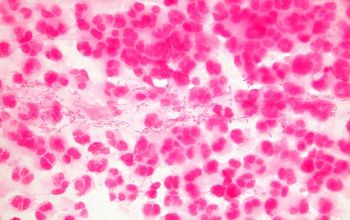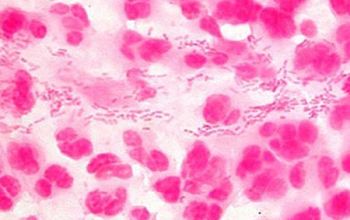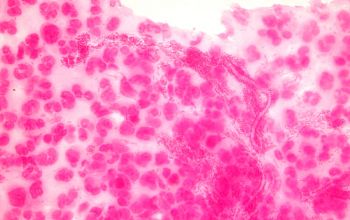Haemophilus ducreyi
-
General information
Taxonomy
Family: Pasteurellaceae
Natural habitats
Colonization of the cervix with H. ducreyi has been documented following sexual intercourse.
Clinical significance
Chancroid is a sexual transmitted disease caused by H. ducreyi which is usually characterized by the development of a single painful genital ulcer, with associated inquinal lymphadenopathy occyring 2 to 7 days following exposure.
Chancroid occurs most often in developing countries, including much of Asia, Africa, and Latin Aerica.
Epidemics of disease are associated with low socioeconomic status, poor hygiene, prostitution, and drug abuse, and commercial sex workers are believed to serve as reservoirs for H. ducreyi.
-
Gram stain
Strands of small gram negative bacilli arranged in a railroad track-like manner on a direct Gram stain are highly suggestiveof H. ducreyi.
However, Gram staining of genital specimens for H. ducreyi is controversial because most genital ulcers contain a mixed bacterial biota, making Gram stain interpretation difficult.
Further more, the positive yield of a Gram stain for H. ducreyi is low in comparison to that of culture.
-
Culture characteristics
-
Facultative anaerobic
H. ducreyi grows poorly, regardless of the medium used, and frequently 3 to 5 dayswill pass before growth appears.
BA: growth on bloodagar is poor, with a slide beta-hemolysis surrounding the colonies.
Chocolate agar:
Colonies growing on chocolate agar are small, flat, gray, andsmooth.
Characteristic tan-yellow colonies, that are highly self adherent and can be 'nudged' intact over the surface of the agar.
Larger colonies maybe interspersed among small colonies but have the same morphology.
-
-
Characteristics
- Gram-negative
- bacilli
- coccoid-bacilli
- growth both-aerobic-and-anaerobic
- no growth on MacConkey agar
- catalase-negative
- oxidase-positive
- indole-negative
- urease-negative
- nonmotile
- vancomycin-resistant
- colistine-susceptible
- needs X-factor
- Strands of small gram negative bacilli arranged in a railroad track-like manner on a direct Gram stain are highly suggestiveof H. ducreyi.
-
References
James Versalovic et al.(2011) Manual of Clinical Microbiology 10th Edition
Karen C. Carrol et al (2019) Manual of Clinical Microbiology, 12th Edition




-350x220.png)